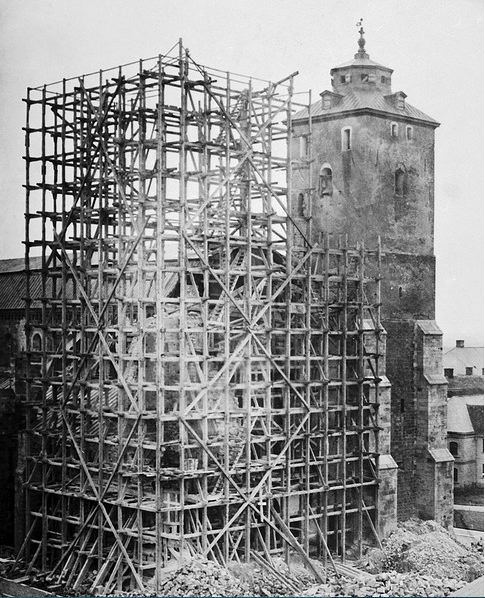
Materials science has been one of the fastest-growing frontiers of innovation, particularly in the realm of sustainable design. Yet there seems to be an odd disconnect between our desire to reinvent tomorrow's materials and our failure to intelligently address the life-cycle of today's. This is precisely what Syracuse-based project D-Build is trying to change through a new model for materials reuse and upcycling in building deconstruction, using principles of design thinking to change the afterlife of architecture.
An alternative to both traditional demolition, which can be costly and dangerous, and traditional deconstruction, which is time-consuming and requires a large workforce, D-Build uses a hybrid process called "green demolition." A building is cut into pieces of manageable size and processed on the ground by a tight, efficient local crew. The site then serves as a hub for connecting buildings, people and businesses, offering a peer-to-peer marketplace for users to exchange materials salvaged from deconstructed buildings and sell industrial design products made with these upcycled materials.
This time-lapse footage captures D-Build's fascinating, nearly ant-like deconstruction process:
Though currently featuring localized examples from upstate New York only, where more than 13,000 abandoned homes are slated for demolition by the city and more than half of the population is unemployed, D-Build aims to implement the model on a national scale while keeping a focus on local engagement — a significant part of the model's advantage is that it creates local jobs, providing both a boost for the regional economy and an opportunity for people to take ownership of rebuilding and revitalizing their community. While various disjointed efforts to revolutionize demolition and deconstruction do exist on a small and scattered scale, they remain unaware of one another and thus incapable of reaching the kind of critical mass necessary for fostering a viable and sustainable new economic model. Given that the 2008 census estimates some 14 million homes across the U.S. that are vacant year-round, D-Build's hub-centric approach holds real hope for creating a centralized platform for this kind of innovation.
In addition to the utilitarian materials exchange in the marketplace, D-Build offers an avenue for information exchange that contextualizes the buildings and preserves their heritage through personal stories, historical records and other user-contributed data points, adding a narrative layer to the pragmatism of materials upcycling. This vision for weaving a living history of buildings is an interesting offshoot of the ever-growing network of data offering a new way to explore and experience cities, where these informational ecosystems can serve as the vital distinction between "places" and "non-places."
D-Build is a for-profit venture, though its goal is "economical self-sustainability." The team is currently seeking interested parties who are willing to use relcaimed materials in large-scale projects. "Ideally," says founder Grant Meacham, "we would love to engage cities on a local government level, and make policy changes that encourage deconstruction and reuse, but until that happens, we will continue pushing forward in the private sphere."

